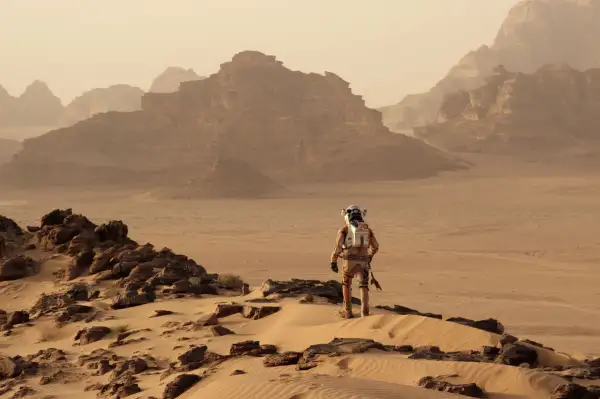Here’s How Much It Would Cost to Travel to Mars

It’s being billed as the largest event ever dedicated to human exploration to Mars: From May 9 to 11, leading scientists and engineers will gather in Washington for the Humans to Mars Summit.
Among the headline speakers will be Buzz Aldrin,William H. Gerstenmaier, associate administrator for the Human Exploration and Operations Directorate at NASA; and Pascal Lee, the director of the Mars Institute, an international non-profit research organization partially funded by NASA.
Money spoke with Lee about the challenges facing Mars missions, and why it's important to launch Mars exploration missions despite them.
At this point, what would it cost to send someone to Mars?
Pascal Lee: The Apollo lunar landing program cost $24 billion in 1960s dollars over 10 years. That means NASA set aside 4 percent of U.S. GDP to do Apollo. To put things in perspective, we also spent $24 billion per year at the Defense Department during the Vietnam War. So basically, going to the moon with funding spread over 10 years cost the same to run the Department of Defense for one year in wartime.
Now, 50 years, later, today’s NASA budget is $19 billion a year; that's only 0.3 percent of GDP, so that’s less than 10 times less than what it was in the 1960s.
Meanwhile, the Department of Defense gets $400 billion a year. So the number I find believable, and this is somewhat a matter of opinion, a ballpark figure, doing a human mission to Mars “the government way” could not cost less than $400 billion. And that was going to the moon. This is going to Mars, so you multiply that by a factor of 2 or 3 in terms of complexity, you’re talking about $1 trillion, spread over the course of the next 25 years.
As far as sending an 'average Jane' to Mars, you’re talking even further out in terms of years. Mars is an incredibly lethal environment; there are several things that can kill you and result in a horrible death if you’re exposed unprotected, so, talking about kids growing up on Mars, it’s not nearly as soon as you’d hope or think. We instead envision something like Antarctica, where you have maybe a handful of people there at a time performing research for a few decades.
There’s another group that wants to turn a Mars mission into, essentially, a reality show, and fund it through commercials, that has other cost estimates, but I find those unrealistic.
What is the biggest cost at this point?
Pascal Lee: It’s not rocketry — the rocket is actually the easiest part, thanks to the private sector. They are able to cut corners, take more risk, do a quick and “not as clean” version. When Elon Musk presented his vision last October in Mexico, no one questioned his ability to make something big.
The biggest cost is actually to develop all the new systems that would allow us to go to Mars and be productive explorers there. For example, right now, we have a beautiful space suit, but it weighs 300 lbs. On the moon, where gravity is six times less than Earth’s, the space suit has a felt-weight of 50 lbs., so that was manageable. But on Mars, the gravity is only about one-third of the Earth’s, so you have a space suit with a felt-weight of 125 lbs. That’s way too heavy. So there’s a technical challenge to cut the mass of the space suit we currently have in half. That’s easier said than done.
We’d also be looking for life, and for that we’ll have to develop technology that can dig down beneath Mars’ inhospitable surface to find ice or water, and also develop the means of transporting ourselves to locations where that water exists. You’re looking at far more complex exploration setup than Apollo.
So what should be the primary motivation for going to Mars?
Pascal Lee: The reality of Mars is unforgiving, but that’s what makes it interesting and challenging and exciting. It’s like President Kennedy said, We would go to Mars not because it is easy, but because it is hard.
The biggest benefit from the Apollo program at the time was to show the Soviet Union that the Western way of life was better and more capable. The scientific benefit was learning about how the moon was formed and how Earth might have evolved, but the biggest benefit to society was the fact that the Apollo program was a huge shot of steroids into STEM [science, technology, engineering, mathematics] education. The number of grads in science fields and math in mid-60s and early-70s essentially doubled. That became the foundation of the technological competitive edge we have today.
Right now, there’s an entire generation of kids in China, enthralled by their space program as they work to send someone to the moon; they’re going into STEM fields, and they are basically shaping up to be [leaders] in the next generation in STEM.